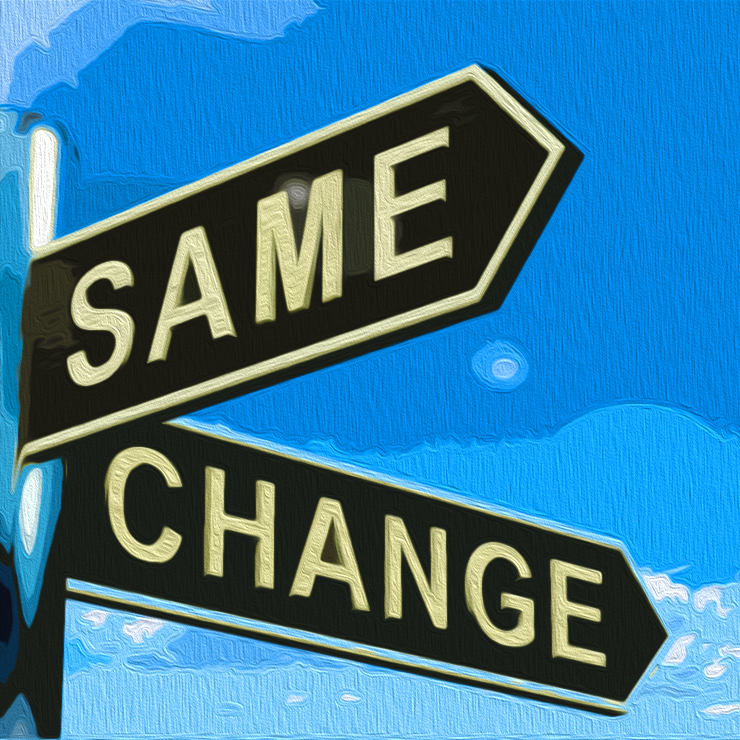
Digital marketing has experienced exponential growth since its inception in 1990, with no signs of slowing down. The advantages of robust digital marketing are extensive, ranging from fostering customer loyalty to enhancing brand awareness and much more.
The Significance of Content Curation
Consumers increasingly rely on digital content to inform their purchasing decisions. Therefore, businesses cannot afford to overlook the significance of creating engaging content that resonates with their target audience and keeps them engaged.
Understanding Content Curation
Content curation plays a vital role in digital marketing strategies. While it may not initially appear as appealing as generating original content, curated content sourced from reliable channels can be just as effective. It serves as a convenient method to drive website traffic and improve search engine rankings.
Deciphering Content Creation
Content creation serves as the cornerstone of most businesses' marketing endeavors. Tailored to specific target audiences, original content aims to establish brand authenticity and foster deeper connections with customers.
Pros and Cons of Content Curation
Content curation offers advantages such as time savings and relationship-building within the industry. However, challenges include the risk of diluting brand voice and maintaining originality.
Pros and Cons of Content Creation
While Google favors original content for SEO purposes and brand identity reinforcement, creating high-quality content can be time-intensive, sometimes necessitating outsourcing.
Finding the Optimal Equilibrium
Striking a balance between content curation and creation is paramount. Aiming for a 40% curated content and 60% original content mix enables businesses to leverage the benefits of both approaches without compromising brand identity or overwhelming the audience.
Measuring Content Effectiveness
Monitoring the performance of content is crucial for refining marketing strategies. Key metrics to track include engagement levels, visitor frequency, page views, conversions, and return on investment. These insights offer valuable feedback on content performance.
Content Curation vs. Creation – Achieving Harmony
Both content curation and creation have their merits. By striking the right balance, businesses can position themselves as industry thought leaders, engage effectively with their audience, and deliver top-notch content. Utilizing tools like Scoop.it for content curation can streamline the content strategy.
Frequently Asked Queries
Types of Marketing
Marketing encompasses four primary categories: Direct Mail Marketing, Traditional Advertising, Public Relations, and Digital Marketing. Each type serves distinct purposes and should be employed strategically to achieve desired outcomes.
Seven Steps of Internet Marketing Strategy
Internet marketing strategies are instrumental in achieving business objectives through online channels. The seven steps include research, planning, implementation, monitoring, analysis, optimization, and evaluation. Each step is pivotal in driving internet marketing success and should be regularly reviewed and refined.
Direct Marketing Examples
Direct marketing tactics encompass various forms such as postcards, brochures, flyers, emails, etc. This personalized approach enables businesses to reach audiences effectively and establish meaningful connections with customers.
Statistics Snapshot
Several statistical insights underscore the efficacy of marketing strategies, including the impact of co-branding, personalization, content sharing ratios, co-marketed ads, and coupon searches by online shoppers.
Effective implementation of internet marketing principles can amplify brand visibility, drive customer engagement, and yield substantial business growth.
Frequently Asked Questions
What does marketing have to do with business strategy?
Every business strategy must include marketing. Without marketing, no one will know what your company has to offer. Without sales, marketing would not be possible. Therefore, marketing is crucial to any business strategy.
However, marketing is not something everyone appreciates. Marketing is often thought to be about advertising campaigns. Marketing goes far beyond advertising campaigns. Marketing covers everything you do for your company to be recognized and respected in the marketplace.
When you think about your business, ask these questions: What image am I trying convey? What will my customers think of me? How should I portray myself to the outside world?
If you don’t answer these questions you haven’t thought of marketing yet.
What are some examples for indirect marketing?
You can think of indirect marketing methods that you could use to promote your company. You might launch a social media campaign asking people to post pictures of themselves using your product. This could spread awareness of your brand.
If you own an auto repair shop, you could post advertisements in local papers encouraging readers to take their cars to your garage instead of going to other shops.
Another example is to send coupons to customers via e-mail or place ads on bulletin boards at public locations.
Indirect marketing works well because it doesn't cost much money.
However, it takes time to build trust among people, so you'll need patience when promoting your business this way.
Also, you need to monitor how effective your campaigns perform. You can also measure the number of leads each method generates.
This will help you to determine which method is best for your company.
What are the major types of marketing?
Marketing is the process of communicating ideas and values to consumers. We often use the term marketing interchangeably with advertising. Marketing does not just include advertising. Marketing includes all forms of communication that promote and market a product or service.
Marketing is made up of three components: promotion, branding, and distribution. Branding refers to how a company identifies itself to its target audience. Promotion is the act of getting attention for your brand by using paid advertisements, free promotions, and public relations activities. Distribution is the delivery of your message to your target audiences. Distribution can be done via traditional methods such as television, radio and print. But, the new technology has made it easier.
How to Build an Ecommerce Marketing Plan?
The first step is to define what you want. This should include products or services that relate to your business. But, you must also offer enough variety for customers to be interested.
The second step is to determine how much advertising, promotion, and other marketing strategies you will need. Multiple methods may be required, including direct mail, email blasts and social media sites. Search engine optimization is another option.
Once you have a rough idea of your budget, you can start to plan for each option. If you're unsure which marketing method would be best for your business, you might consider asking a professional specializing in e-marketing. They can help decide the best marketing strategy for your business.
Once you have created a plan, it's time to start implementing it. This will make the process much easier if you hire someone to do all or part of the work.
It doesn't mean you have to start over. Use proven strategies that have worked well for other online retailers. Remember to test everything before making any changes.
Remember that your ultimate goal should be to increase sales and profit. Your eCommerce marketing strategy must consider both short-term goals as well as long-term plans.
Our article on eCommerce marketing tips will help you increase your sales. We hope they can help you achieve your goals!
What are the best digital marketing strategies that I can do from home?
Digital marketing is a powerful way to reach customers online. It's also an excellent opportunity to generate leads for your business.
Social media platforms such as Facebook, Twitter, or LinkedIn can be used to promote your brand. You can also make use of email marketing tools for sending emails to prospects and potential clients.
There are many other ways you can market your product or service using digital mediums.
It shouldn't be difficult to get started as long as you are familiar with how to use these channels.
Statistics
- A poll earlier this year found that 14% of older Gen Z's had bought an item in the previous six months based on an influencer's recommendation. (influencermarketinghub.com)
- Companies that use personalization are seeing revenue increases ranging from 6-10%. (blog.hubspot.com)
- 81% of brands employ affiliate marketing, and eCommerce sites are particularly good candidates. (blog.hubspot.com)
- According to statistics, 60% of online shoppers worldwide actively search for coupons before purchasing from a virtual shop. (influencermarketinghub.com)
- This allows us to deliver CPCs that are 80% less than average and CTRs 4-5 times higher than average. (marketinginsidergroup.com)
External Links
blog.hubspot.com
youtube.com
moz.com
- SEO Learning Center Moz
- [Case Study] How Moz Ranked #1 for High-Volume Keywords in Less Than 3 Months – Moz
statista.com
How To
Six Types Of Ecommerce Marketing
How can I market my eCommerce shop?
Ecommerce marketing can be one of the most challenging marketing tasks. You need to learn about your customers' buying patterns and how they interact with you products and services. You can then create a strategy that will help you achieve your goals.
There are six types eCommerce marketing strategies.
- Product Strategy – The first step is determining what kind of product you want to sell online. There are three main types of products: physical goods, digital goods, and membership websites. Once you have determined which category you want, you can decide whether or not to offer wholesale prices. Wholesale pricing means you set the price you sell your products, while retail pricing means you charge customers directly for your products.
- Pricing Strategy – Next you will need to determine how much money you want from selling your products. Profit margins and competition are important. Shipping costs, taxes, and other fees should also be considered. You can increase your profits by lowering your cost per sale or increasing your sales volume when you are deciding on your pricing strategy.
- Promotion Strategy: Now comes what? It is important to create a promotion strategy that will work best for your company. One strategy is to offer free shipping and special discounts. You can also brainstorm new promotional ideas if you don't already have them.
- Shipping Strategy: After you've determined how to promote the products, think about how to get them to people. Will you ship via USPS/FedEx, UPS, DHL or another delivery method? Are you going to use a fulfillment center or will you do it all yourself?
- Merchandise Management System – Your merchandise management system includes software that helps you manage inventory, track orders, fulfill orders, and communicate with suppliers. There are many options available, depending on what your budget is and your preferences.
- Customer Service Strategy: Finally, it is important to create a customer-friendly strategy for your company. Do you plan to offer phone support or email? Customers can contact you via live chat, social media or snail mail.
————————————————————————————————————————————–
By: 10494
Title: Content Curation vs. Creation: Striking the Perfect Balance
Sourced From: internetlib.org/content-curation-vs-creation-finding-the-right-balance/
Published Date: 2/1/2024 5:22:14 PM
